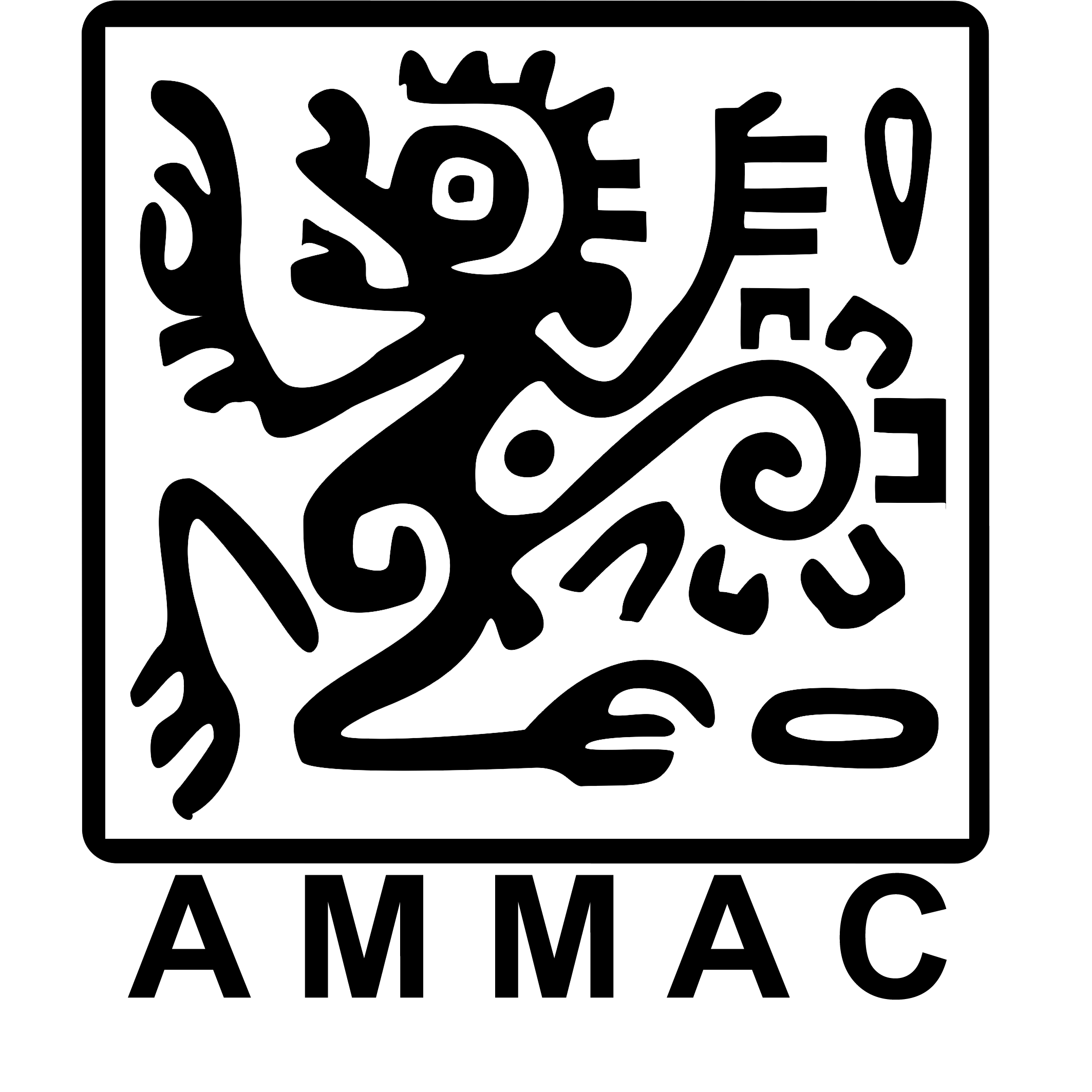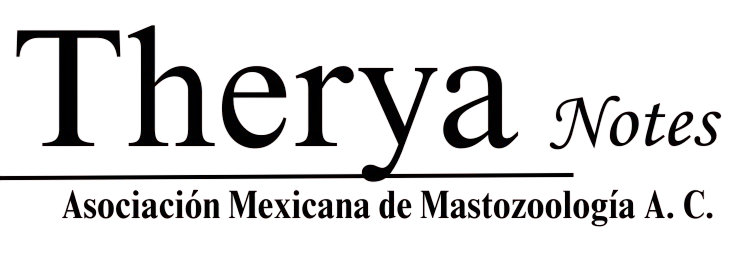Submissions
Submission Preparation Checklist
As part of the submission process, authors are required to check off their submission's compliance with all of the following items, and submissions may be returned to authors that do not adhere to these guidelines.-
The submission has not been previously published or is under consideration by any other journal (or has provided an explanation in the comments to the editor).
- The editorial guidelines (Guidelines for the author) have been revised and continue in full
-
The submission file is in Microsoft Word or RTF format.
-
The text has a double line spacing a 12-point font size, italics is used instead of underlining (except in URLs), and all illustrations, figures and tables are placed at the end.
-
The text brings together the stylistic and bibliographic conditions included in the guidelines for the author, in About the Journal.
-
References are well reviewed in they are written as cited.
Author Guidelines
THERYA 2025 EDITORIAL GUIDELINES
The editorial guidelines of Therya serve as a comprehensive set of examples and directives intended to ensure consistency, quality, and uniformity across all aspects of publication—from writing style to layout and design. These guidelines help maintain the identity of the journal and ensure that submitted articles meet expected ethical and professional standards, while also supporting an efficient and high-quality editorial process.
Scope and Submission
Therya publishes original scientific articles in the field of mammalogy. All manuscripts undergo a double-blind peer review process to ensure the quality and relevance of the content. The journal also accepts review articles and editorials on specific mammalogical topics.
Each manuscript must be accompanied by a cover letter from the Corresponding Author (in PDF format) addressed to the Editors-in-Chief. The letter must clearly state that the manuscript is original, has not been submitted elsewhere, and is not under simultaneous review by another journal. It must also declare the absence of conflicts of interest.
The letter must include the Corresponding Author’s institutional affiliation, complete mailing address, and email address. If there are multiple authors, all co-authors must sign the letter, confirming their agreement with the manuscript's content and the designation of the Corresponding Author. Additionally, the email addresses of all co-authors must be included.
Manuscripts may be written in English (U.S.) or Spanish. If the manuscript is not submitted in English, Therya offers a translation service at an additional cost. While the choice of language is up to the author, publication in English is recommended to maximize reach.
After receiving reviewer comments and an editorial decision, authors must respond within the following timeframes:
- Minor revisions: submit the revised manuscript within 2 weeks.
- Major revisions: submit the revised manuscript within 4 weeks.
If these deadlines cannot be met, authors must notify the Associate Editor and request an extension. Failure to respond within 45 days will result in withdrawal of the manuscript from the editorial process.
Once page proofs are sent to authors, they will have 72 hours to return them with corrections.
Manuscript Preparation
Initial Submission Requirements:
- Format: .doc or .docx (MS Word)
- Line spacing: 1.5
- Margins: 2.5 cm
- Font: Times New Roman, size 12
- Include page and continuous line numbers
Full manuscripts must include the following, in order:
- A short running title (max 10 words) relevant to the manuscript
- Title (max 15 words, all caps, bold, left-aligned, scientific names in italics)
- Authors: names aligned left, separated by commas. Affiliations indicated by superscript numbers. Corresponding author marked with an asterisk (*). Include institutional affiliations, emails, and ORCiD IDs (register at www.orcid.org).
Abstracts
- Include both English and Spanish abstracts (max 280 words each)
- Should reflect the same content across both languages
- Must include: background, objective, methodology, key findings, and main conclusion
Keywords
- 5 to 10 in English and Spanish, alphabetically ordered, separated by commas
Leave two blank lines after keywords, then begin the Introduction (no heading).
Manuscript Structure
Introduction
Present the purpose of the study, theoretical or conceptual framework, research questions, and hypotheses. Provide a concise but comprehensive literature review to contextualize the study.
Materials and Methods
Describe in detail the methodology, data collection, and analysis to ensure reproducibility. Include:
- Study design and area
- Units of analysis or specimens
- Statistical or lab methods
- Software used
- Justification of statistical tools
Ethical statement: Must indicate adherence to ASM guidelines (Sikes et al. 2016) and approval from institutional animal care and use committees when applicable. Government permits must also be stated if required.
Subheadings (e.g., Study Area, Statistical Analysis) should be in italic font, starting at the beginning of the paragraph.
Results
Present findings clearly and concisely. Do not interpret here—interpretation belongs in the Discussion. Include essential figures and tables (submitted separately) and appendices if needed.
Discussion
Interpret results in light of the research questions, theoretical framework, and related studies. Address study limitations and future research directions.
In-Text Citation Format
- Use Author Year (no comma), ordered chronologically: (Ortega 2002; Greenberg 2019)
- For three or more authors, use: Author et al. (italicized)
- For multiple works by the same author/year: (Pérez-López 2010a; 2010b)
References (Literature Cited)
- Only include works cited in the text
- Order alphabetically by first author, then chronologically
- Use hanging indentation
- For six or fewer authors, list all; for seven or more, list the first six followed by et al.
- Include DOI at the end of each reference
- Journal names: full name, italicized, no abbreviations
- Article and book titles: capitalize only first word and proper nouns
- Scientific names in titles: italicized
Examples
Journal Articles
Sikes RS, Animal Care and Use Committee of the American Society of Mammalogists. 2016. 2016 Guidelines of the American Society of Mammalogists for the use of wild mammals in research and education. Journal of Mammalogy 97:663–688. https://doi.org/10.1093/jmammal/gyw078.
Willis HR, Sosale MS, Edwards CW, Figueiró HV, Zhuk A, and Koepfli K-P. 2025. Complete mitochondrial genomes of the Eastern lowland olingo (Bassaricyon alleni), ringtail (Bassariscus astutus), white-nosed coati (Nasua narica), and crab-eating raccoon (Procyon cancrivorus) elucidate the phylogeny of the Procyonidae. Frontiers in Ecology and Evolution 13:1518714. https://doi.org/10.3389/fevo.2025.1518714
Woodman N, and Timm RM. 2023. Cryptotis nigrescens (Eulipotyphla: Soricidae). Mammalian Species 55(1035):1–11. https://doi.org/10.1093/mspecies/sead011.
Books
Gardner AL, editor. 2007. Mammals of South America. Vol. 1, Marsupials, xenarthrans, shrews, and bats. Chicago (EEUU): University of Chicago Press.
Wilson DE, and Mittermeier RA, editors. 2009. Handbook of the mammals of the world: Vol. 1: Carnivores. Barcelona (SPA): Lynx Edicions.
Book Chapters
Moratelli R, and Juste J. 2019. Family Vespertilionidae (vesper bats). In: Wilson DE, and Mittermeier RA, editors. Handbook of the mammals of the world. Vol. 9, Bats. Barcelona (SPA): Lynx Edicions; p. 716–981.
Schwartz SM, Bishop K, and Maryem-Fama IA. 2006. Dynamic complexity of wing form in bats: implications for flight performance. In: Zubaid A, McCracken GF, and Kunz TH, editors. Functional and evolutionary ecology of bats. Vol. 1. Oxford (UK): Oxford University Press; p. 110–130.
Theses
Passoni G. 2022. Patterns and processes of recovering large mammal communities [PhD thesis]. [Oxford (UK)]: Oxford University.
Reddin C. 2014. Small mammal community associations and habitat use at pea ridge national military park, Benton County, Arkansas. [Master’s Thesis]. [Arkansas (USA)]: University of Arkansas.
Web pages
(Cited as “(Author Year)” in the text and the web address is only included in the Literature Cited section), and the access date must be indicated.
California Department of Fish and Wildlife [CDFW]. 2023. State & federally listed endangered & threatened animals of California. Sacramento (CA, EE.UU.): California Department of Fish and Wildlife; January, 2024. [Accessed January 28th, 2024]. www.dfg.ca.gov/biogeodata/cnddb/pdfs/TEAnimals.pdf.
Software
Cite as “(Author/Year)” in the text and include the reference in the Literature Cited section.
Kearse M, Moir R, Wilson A, Stones-Havas S, Cheung M, Sturrock S, Buxton S, Cooper A, Markowitz S, Duran C, Thierer T, Ashton B, Meintjes P, and Drummond A. 2012. Geneious Basic: an integrated and extendable desktop software platform for the organization and analysis of sequence data. Bioinformatics 28(12):1647-9. https://doi.org/10.1093/bioinformatics/bts199
R Core Team. 2021. R: A language and environment for statistical computing. R Foundation for Statistical Computing. V. 2.14.2. Vienna (Austria). https://www.R-project.org/.
Artificial Intelligence Use Declaration
If AI tools (e.g., ChatGPT, Gemini, Claude) were used for drafting, ideation, editing, or translation, this must be declared in a section titled “Declaration of Artificial Intelligence Use”, located after Acknowledgments.
Permitted uses:
- Language editing
- Preliminary translation
- Style or clarity suggestions
- Brainstorming or outlining
- Grammar/syntax checking
Prohibited uses:
- Full manuscript drafting
- Fabricating data or references
- Concealing AI use in major sections
Authors must validate all AI-generated content and are responsible for ethical integrity.
Author Contributions
Clearly state each author's contribution to the manuscript's conception, design, data analysis, or writing.
Scientific Names, Abbreviations, Units
- Define all non-standard symbols and spell out acronyms on first use
- Use full genus name on first mention: Balaenoptera musculus → B. musculus
- Include authority on first mention for taxonomic studies: Tadarida brasiliensis (I. Geoffroy Saint-Hilaire, 1824)
- Use SI units and metric system
- Example of geological notation: “Holocene”, “K/Pg”, “Ma”, “My”, “BP”
Use numerals for whole and decimal values. Spell out single-digit ordinals and common fractions.
Statistical Reporting
- Report test statistics with degrees of freedom:
o t₂ = 3.76, P < 0.04
o F₆,₁₉₈ = 0.253, P = 0.618
- Italicize: F, G, P, R, r, R², t, U, W, z
- Not italicized: SD, SE, CI, d.f.
- Use mean in text; use x̄ in values
o 10.4 ± 2.3 (x̄ ± SD)
- Chi-square test: X² = 234.55
- Report regression details:
o (β = -0.32, SE = 0.01, t = 125, p = 0.04)
o or with confidence intervals: (β = -0.32, CI95% = -0.46 – -0.16)
Tables and Figures
General Guidelines
-
Tables and figures should be understandable on their own, without requiring the reader to refer to the manuscript.
-
Legends must include species names, collection locations, and collection dates.
-
Tables and figures should be inserted sequentially after the Literature Cited section and numbered with Arabic numerals in the order they are first mentioned in the text.
Tables
-
Each table should start on a separate page and be in editable text format (Word); images of tables will not be accepted.
-
Column and row headings: capitalize only the first word (except proper nouns).
-
Use bold only for the table title (e.g., “Table 1.”) and indent if necessary.
-
Table footnotes should use lowercase letters.
-
Table formatting:
-
No vertical lines.
-
Only three horizontal lines: at the top, below column headings, and at the bottom.
-
-
Legends for tables should be numbered (one per page) and include the meanings of any abbreviations used.
Figures
-
Figure legends must appear on a separate page (not embedded in the images).
-
Page title: “Figure Legends” (level 1 heading).
-
List legends in numerical order using the format: Figure X. Description (not Fig. X.XX).
-
Figures should be submitted separately in EPS, TIFF, PNG, or SVG format and labeled according to their number.
-
Minimum resolution:
-
600 dpi for illustrations (actual size or letter size, ~3600 pixels wide).
-
400 dpi for photographs (15 × 20 cm or 6 × 8 in or 2400 × 3600 pixels).
-
-
Maps must include coordinates (latitude/longitude), orientation arrow (N), and a scale bar if applicable.
-
Multi-panel figures: label each panel with capital letters (“A,” “B,” “C,” etc.) that stand out from the image; maintain the same labels in the legend.
Accessibility
-
Color figures are allowed; use color combinations accessible for individuals with visual impairments.
-
Image size and font will be determined by the General Editors in the layout version. Large fonts and clear legends are recommended for legibility.
Cover Photos
-
Color images are accepted and must be submitted as separate files.
Third-Party Content
-
For figures not owned by the authors, obtain the broadest possible distribution rights (all formats, editions, languages, worldwide, and full copyright period).
-
If these rights cannot be obtained, consult the General Editors.
Supplementary Data
Files (documents, spreadsheets, images, audio/video, code) may be submitted separately and referenced as:
- Supplementary Data SD1, SD2, ...
Include a section titled **“Supplementary Data
Special Contribution
Seccion especial, solo por invitacion del editor General
Copyright Notice
THERYA is based on its open access policy allowing free download of the complete contents of the magazine in digital format. It also authorizes the author to place the article in the format published by the magazine on your personal website, or in an open access repository, distribute copies of the article published in electronic or printed format that the author deems appropriate, and reuse part or whole article in own articles or future books, giving the corresponding credits.









